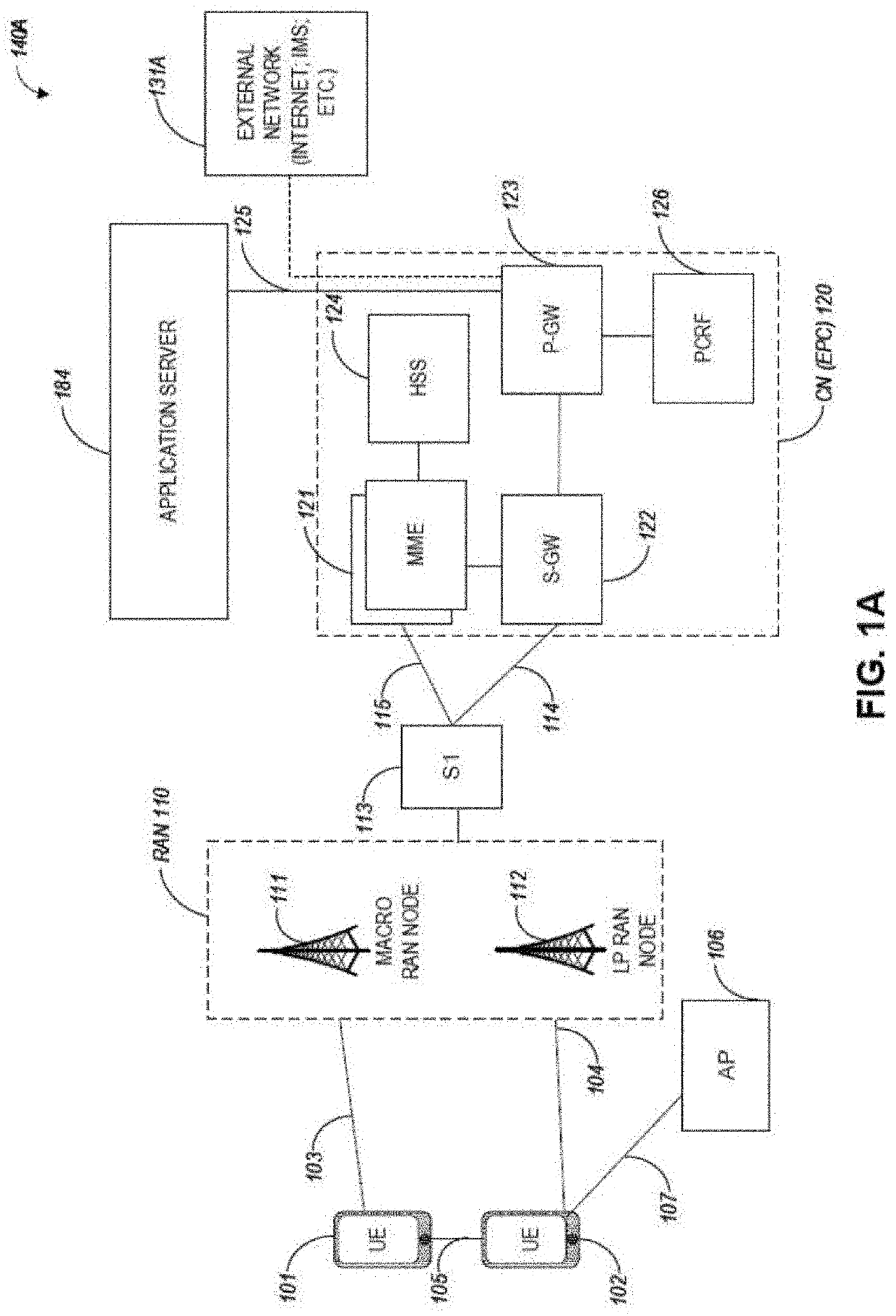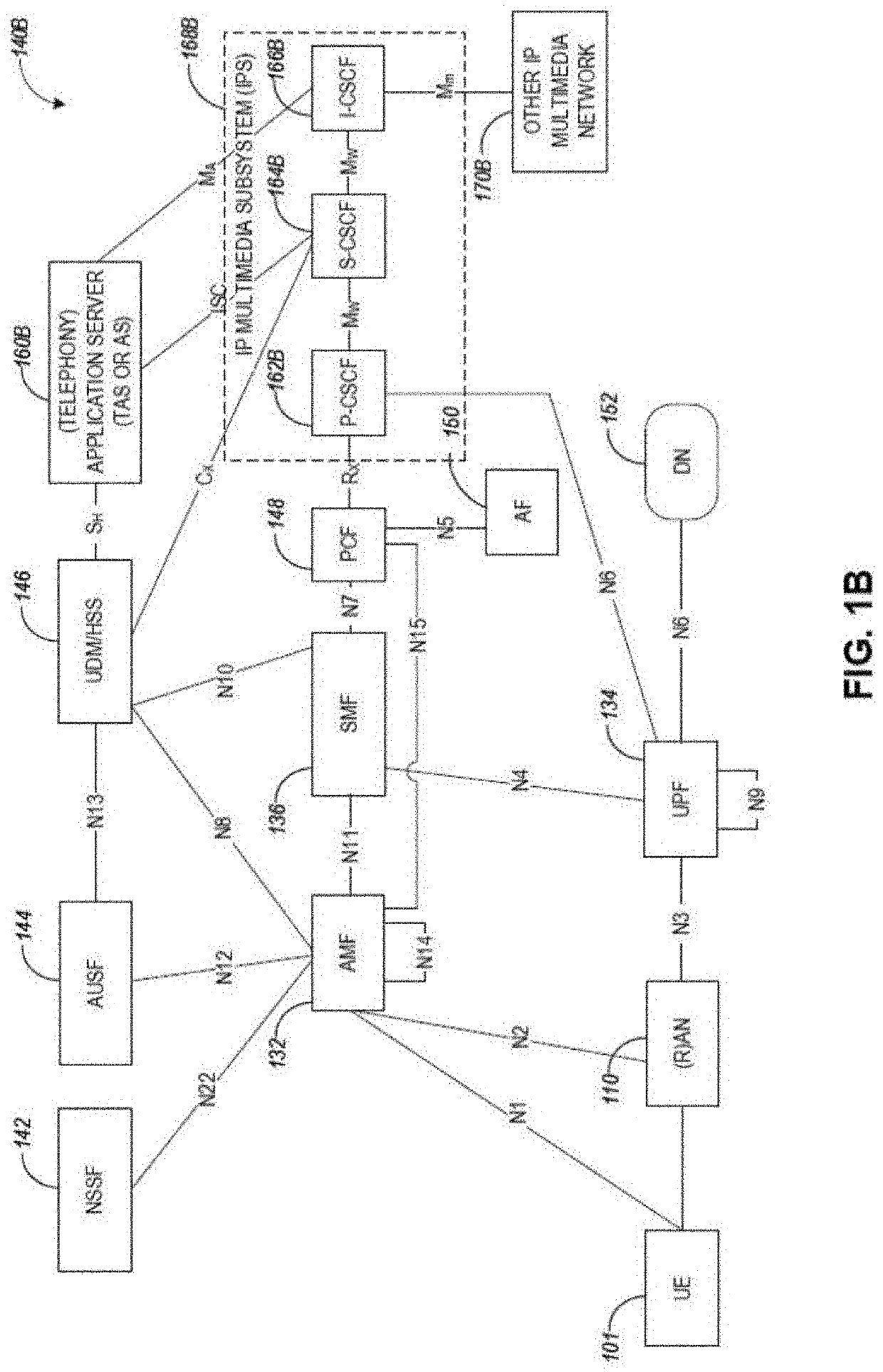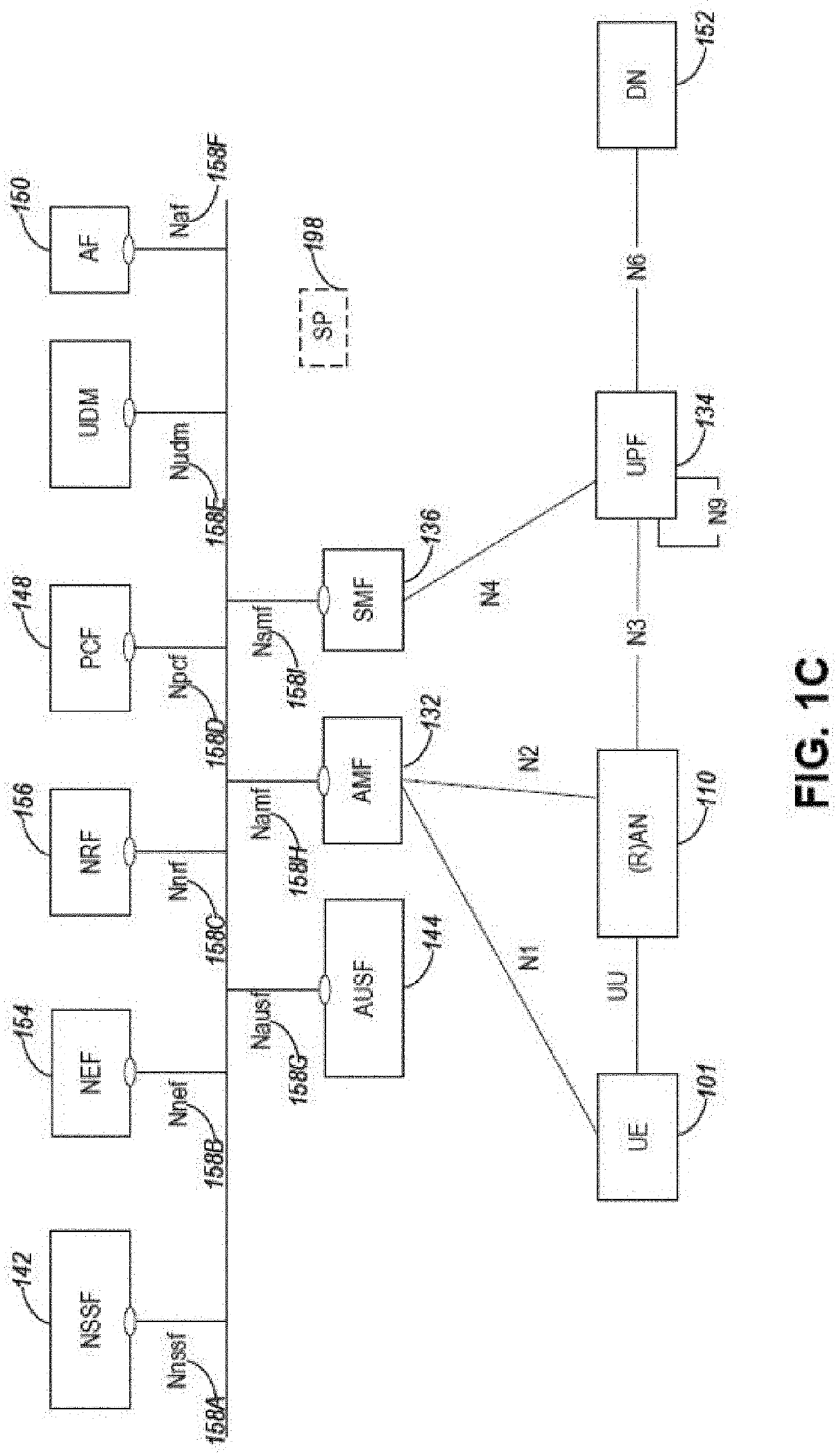Repetition schemes for urllc operating in unlicensed spectrum
- Summary
- Abstract
- Description
- Claims
- Application Information
AI Technical Summary
Benefits of technology
Problems solved by technology
Method used
Image
Examples
Embodiment Construction
[0019]The following description and the drawings sufficiently illustrate specific embodiments to enable those skilled in the art to practice them. Other embodiments may incorporate structural, logical, electrical, process, and other changes. Portions and features of some embodiments may be included in, or substituted for, those of other embodiments. Embodiments set forth in the claims encompass all available equivalents of those claims.
[0020]FIG. 1A illustrates an architecture of a network in accordance with some aspects. The network 140A includes 3GPP LTE / 4G and NG network functions that may be extended to 6G functions. Accordingly, although 5G will be referred to, it is to be understood that this is to extend as able to 6G structures, systems, and functions. A network function can be implemented as a discrete network element on a dedicated hardware, as a software instance running on dedicated hardware, and / or as a virtualized function instantiated on an appropriate platform, e.g.,...
PUM
 Login to View More
Login to View More Abstract
Description
Claims
Application Information
 Login to View More
Login to View More - R&D Engineer
- R&D Manager
- IP Professional
- Industry Leading Data Capabilities
- Powerful AI technology
- Patent DNA Extraction
Browse by: Latest US Patents, China's latest patents, Technical Efficacy Thesaurus, Application Domain, Technology Topic, Popular Technical Reports.
© 2024 PatSnap. All rights reserved.Legal|Privacy policy|Modern Slavery Act Transparency Statement|Sitemap|About US| Contact US: help@patsnap.com










